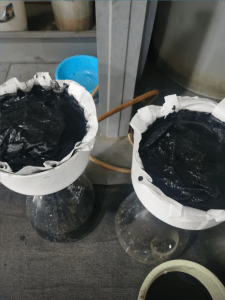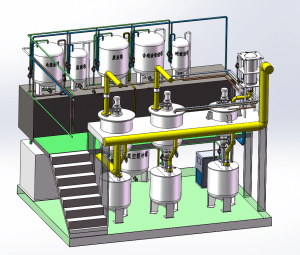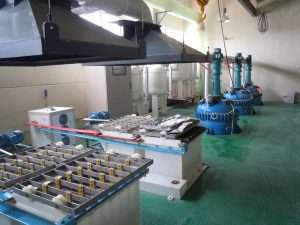Call us now:
Nitrogen oxides are a class of pollutants that are mainly emitted from coal, fuel oil, gas and other industrial and transportation industries. The following are some NOx exhaust gas treatment methods:
1. Selecting low-NOx combustion technology: By selecting low-NOx combustion technology, such as ultra-low-NOx combustion technology and low-NOx burners, we can reduce the generation of NOx during the combustion process.
2. Denitrification technology: the use of catalytic reduction, selective catalytic reduction, non-catalytic reduction and other technologies to convert nitrogen oxides into nitrogen gas, to achieve the purpose of reducing emissions.
3. Ammonia injection method: ammonia is sprayed into the flue gas to react with nitrogen oxides to produce harmless nitrogen and water.
4. Absorption liquid absorption method: The flue gas will be in contact with the absorption liquid, and the absorption liquid will be used to absorb nitrogen oxides to achieve the purpose of emission reduction.
5. Incineration method: The exhaust gas is burned at high temperature, and the nitrogen oxides are oxidized to nitrogen gas at high temperature to achieve the purpose of emission reduction.
6. Biological treatment method: Through bioreactors, biofilter and other equipment, the nitrogen oxides in the exhaust gas will be converted into harmless nitrogen gas.
The above are some of the common NOx treatment methods, the specific choice of which method needs to consider the emissions, treatment effect, cost and other factors.
Dry denitrification technology: Using catalysts or adsorbent materials to remove NOx directly without adding water and additives, which has the advantages of energy saving and environmental protection.
Electric dedusting technology: The dust is charged by the electric field action, and then the electric field force is used to make it settle, and it also has some effect on NOx removal.
Catalytic oxidation method: Using catalysts to catalyze the reaction between nitrogen oxides and oxygen, converting them into harmless nitrogen and water.
Wet oxidation method: Oxidation and decomposition of nitrogen oxides by wet oxidation reaction, converting them into harmless nitrogen and water.
Negative pressure adsorption technology: The exhaust gas is passed through a negative pressure adsorption device, and the adsorbent is used to adsorb nitrogen oxides on the surface to achieve the purpose of emission reduction.
The above are some of the common NOx treatment methods. The specific choice of which method needs to be considered according to different exhaust gas characteristics, treatment requirements and economic costs and other comprehensive factors. At the same time, it should be noted that the exhaust gas treatment should follow the principle of "prevention and control, comprehensive treatment, source control" to achieve the best treatment effect.
Translated with www.DeepL.com/Translator (free version)


